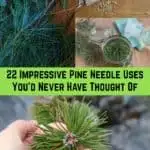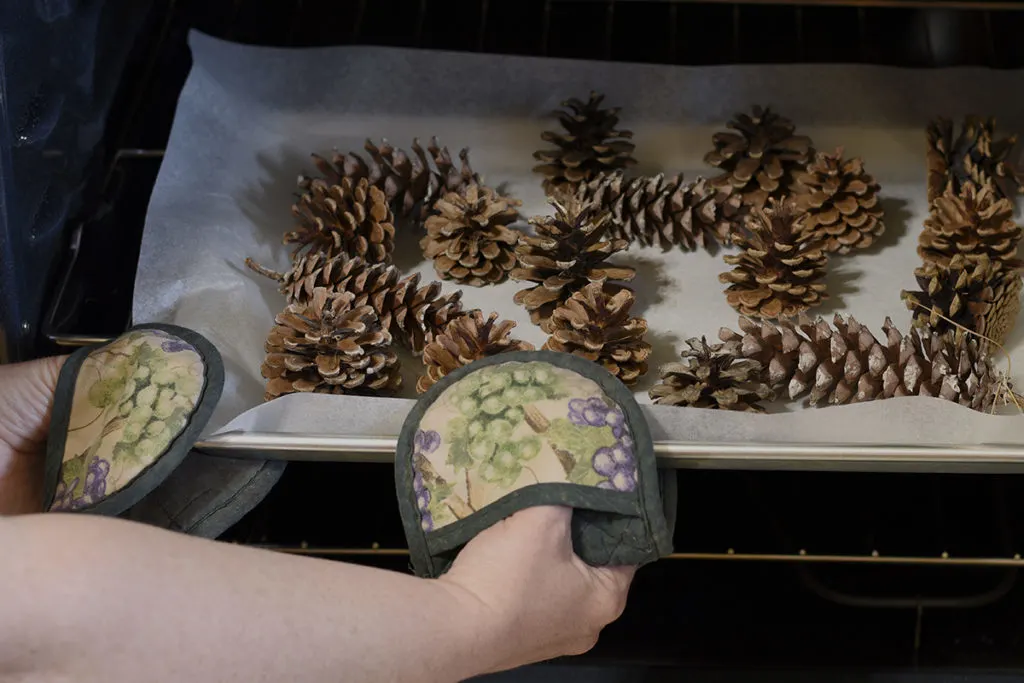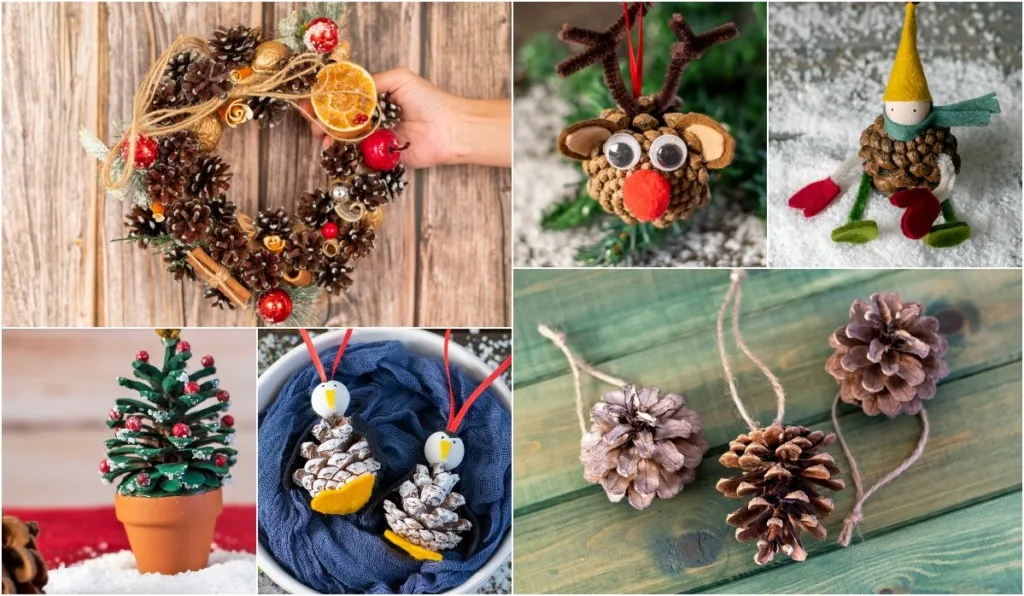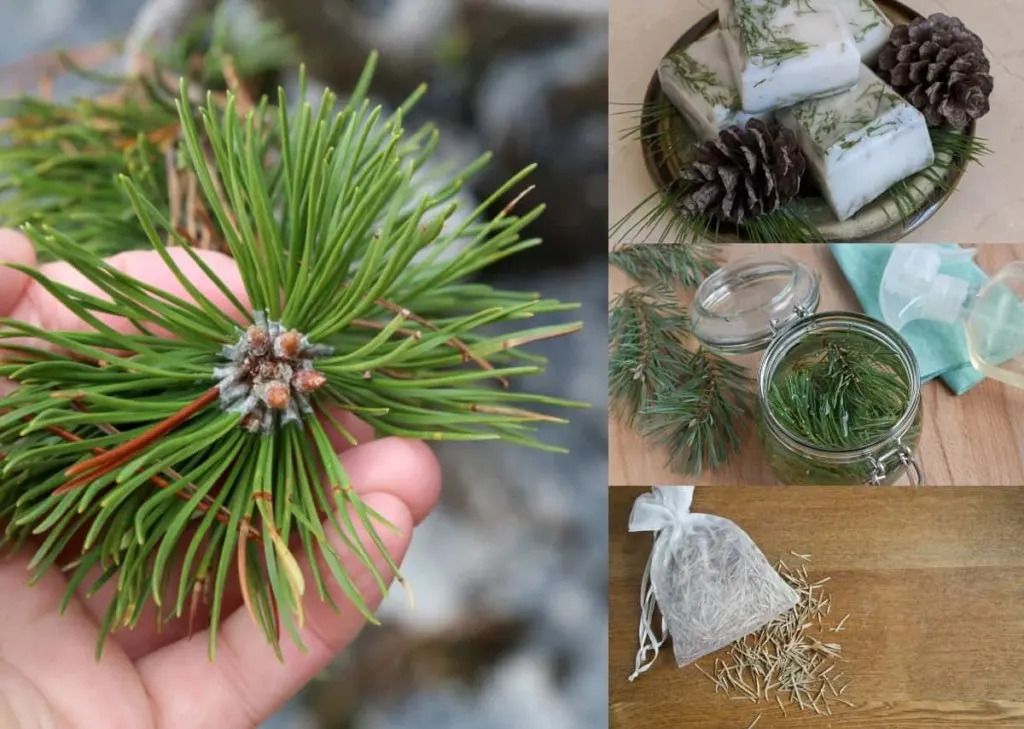
I kind of have a thing for pine trees.
If you were to ask my family how I feel about pine trees, they would probably roll their eyes and groan. When it comes to our fresh-cut Christmas tree, my eyes are always bigger than our ceiling.
Every single year.
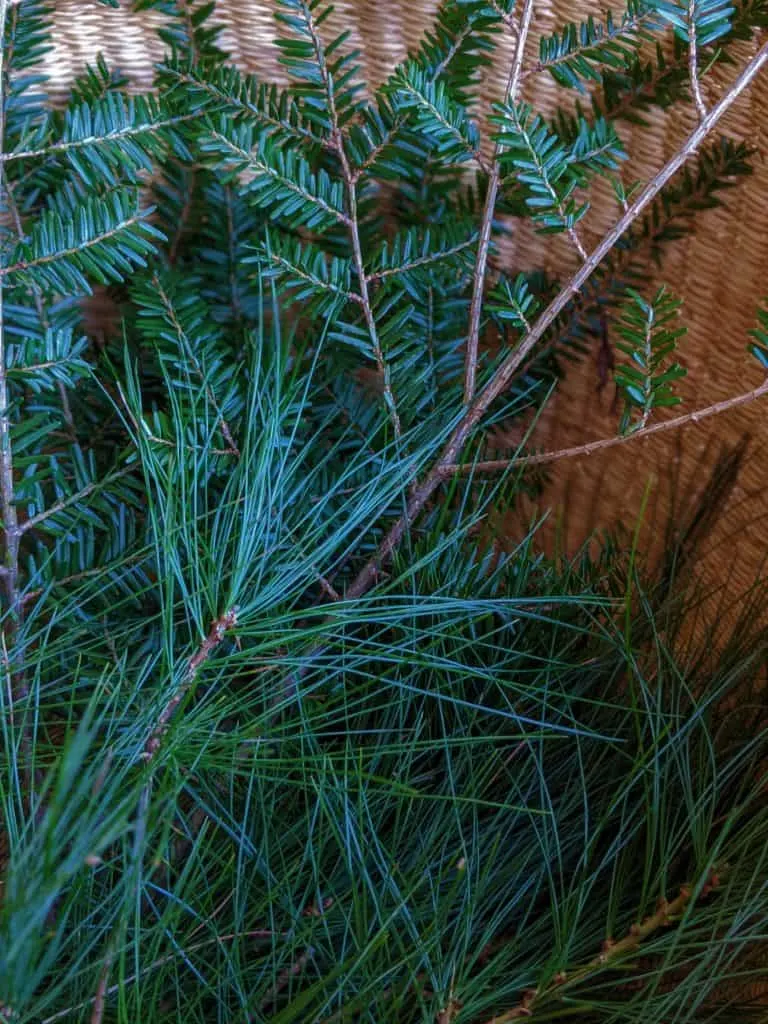
Half of all the candles I own are pine-scented. And one of my favorite vacation spots is in the Adirondack mountains amidst massive balsam fir trees.
If I close my eyes, I can picture myself lying in the hammock listening to the wind in the branches. I can almost smell that crisp, pine scent.
What’s not to love?
Related Reading:
A Little About Pine Trees
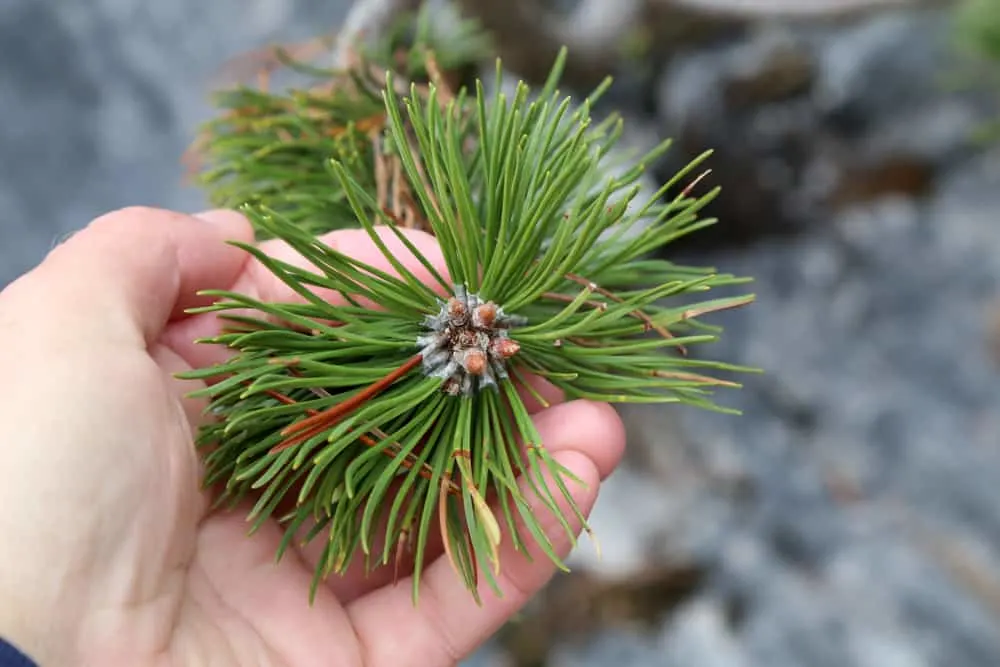
Pine trees are part of the conifer family.
Therefore, they are gymnosperms, meaning they don’t have fruit or flowers that protect their seeds. The seeds are inside cones, which is where the name conifer comes from. In Latin, conifer translates to cone-bearing.
Conifers have needles as opposed to leaves and keep them year-round. And this is why we call them evergreens.
You can find pine trees nearly everywhere on the planet.
The only place they don’t grow is in Antarctica. (To our Antarctic readers, we apologize, you won’t find this post very helpful.) (Conifers, Basic Biology, 2019)
With pine trees come pine needles.
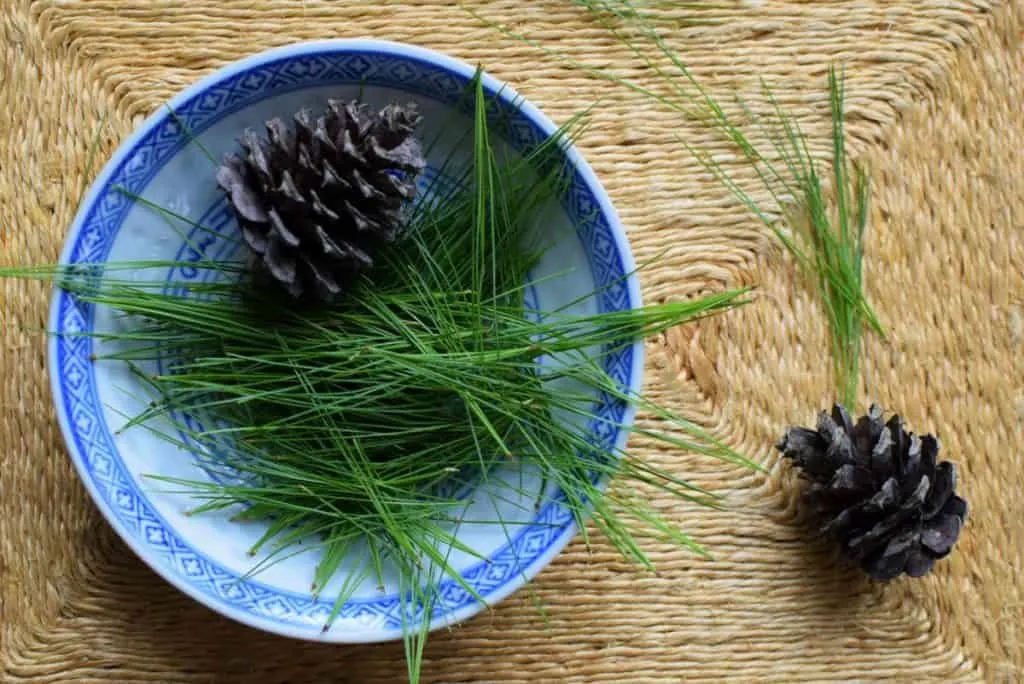
So many pine needles. If you have pine trees on your property or have ever had a fresh-cut Christmas tree, then you know all about the mess that pine needles can make.
Believe it or not, you can put those pine needles to good use. Fresh or dried, you can use pine needles for everything. For instance, you can eat them, you can make medicine with them, even use them for your chickens!
I’ll show you all the ways you can use pine needles in and around your home.
Related Reading:
A Note About Safely Ingesting Pine
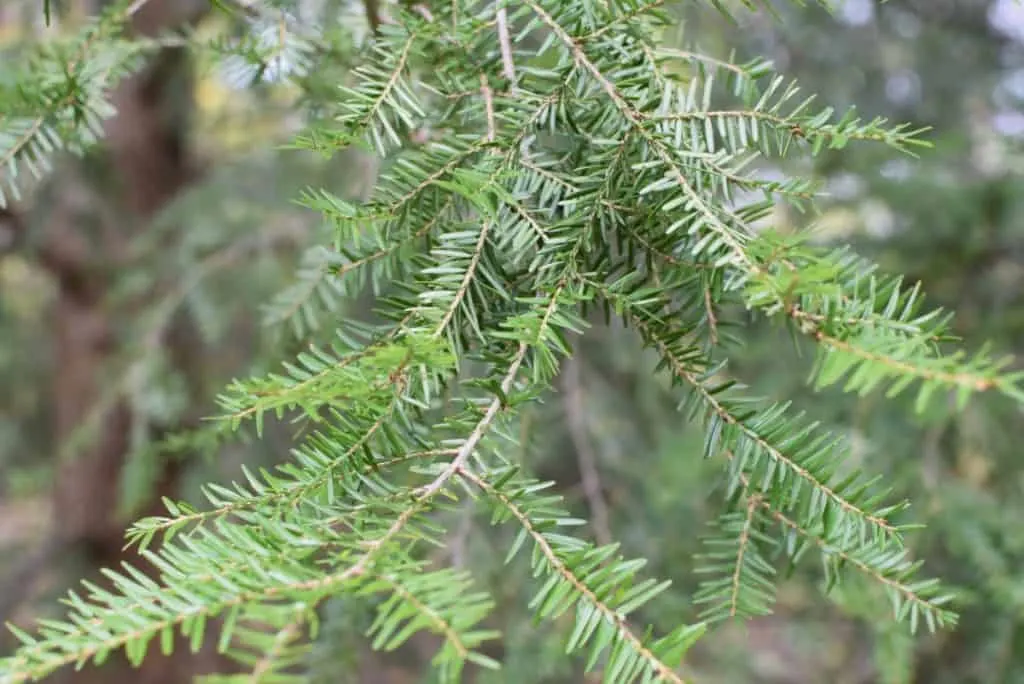
- Nearly all conifer needles are edible; spruce, fir, pine, and hemlock. (For hemlock we are talking about the evergreen tree and not the poisonous plant.)
- Some research suggests that pregnant women avoid ingesting needles from the Ponderosa pine.
- Do not eat any part of the yew; its needles can be downright deadly.
- Don’t use pine needles from trees that have been sprayed with pesticides. This means your Christmas tree is out!
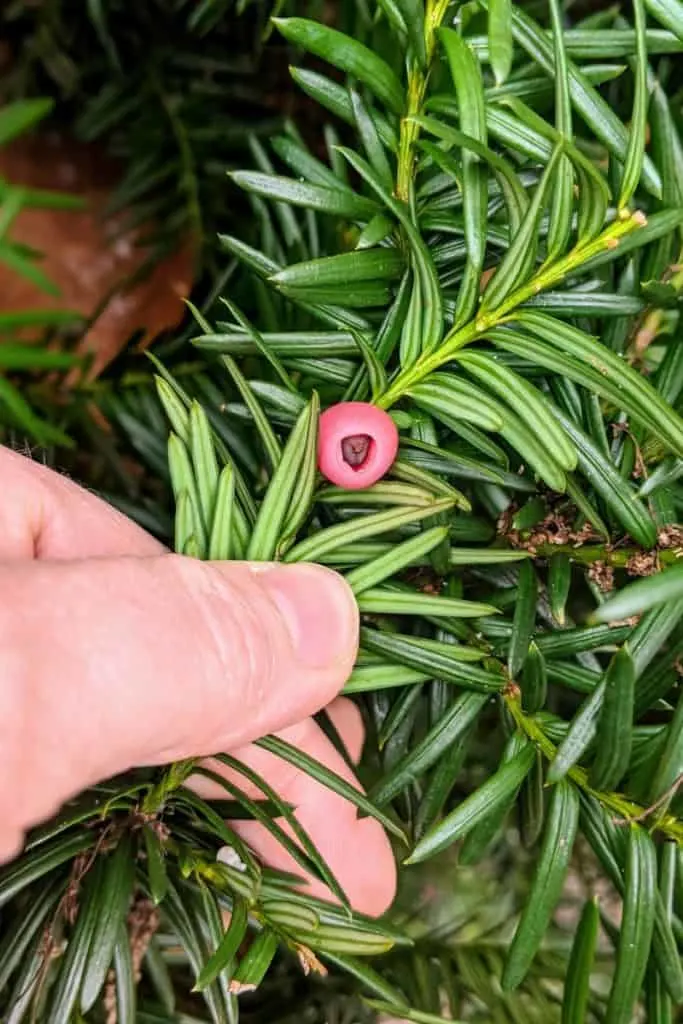
Now that I’ve scared the wits out of you, please just be smart. Do your due diligence to identify pine species before you ingest them. It’s worth the minor effort required to try some of these delicious treats.
Pine Needle Uses In the Kitchen
You’ll want to use freshly picked pine needles for all of those food items.
1. Pine-Smoked Meats
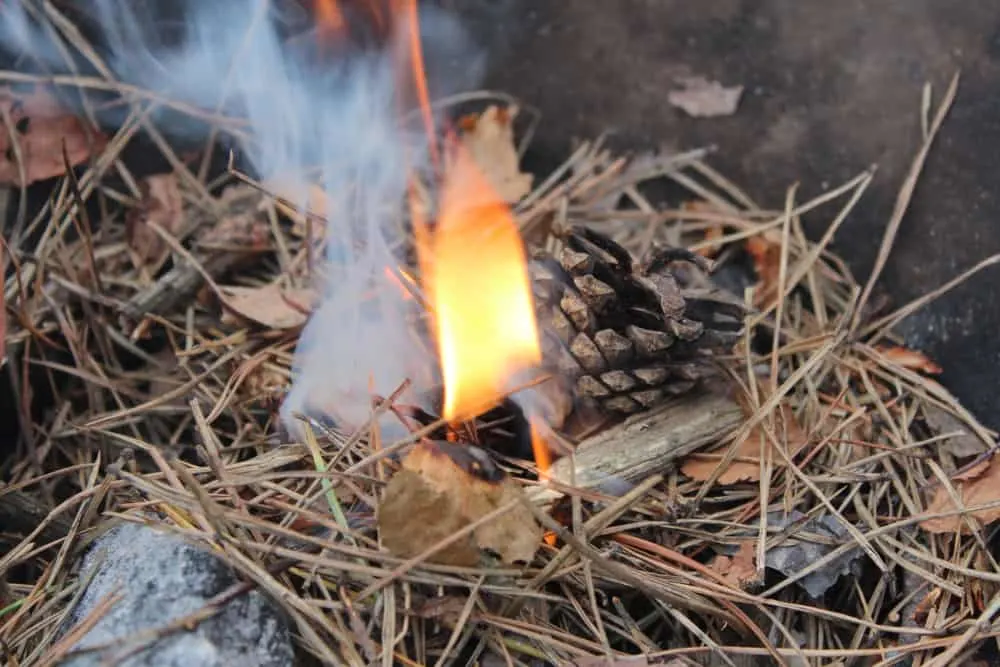
The next time you fire up the grill, throw pine needles on your charcoal right before putting your meat on. Pine smoke is especially great for chicken, seafood, and veggies.
2. Pine-Infused Vinegar
Try infusing vinegar with pine needles for a splash of something different.
Put one 1/3 cup of pine needles into a jelly jar and top up with vinegar. I think white balsamic vinegar would pair exceptionally well with pine. Screw the lid on and give it a good shake.
Let the pine needles meld with the vinegar for about three weeks. Strain into a clean jar to remove the needles. Use your pine needle vinegar in salad dressings, stir-fries, and soups.
3. Pine needle cookies, yes, cookies!
Shortbread is easily my favorite cookie. You’ve got to love a classic that only requires four ingredients to create a mouth-watering treat.
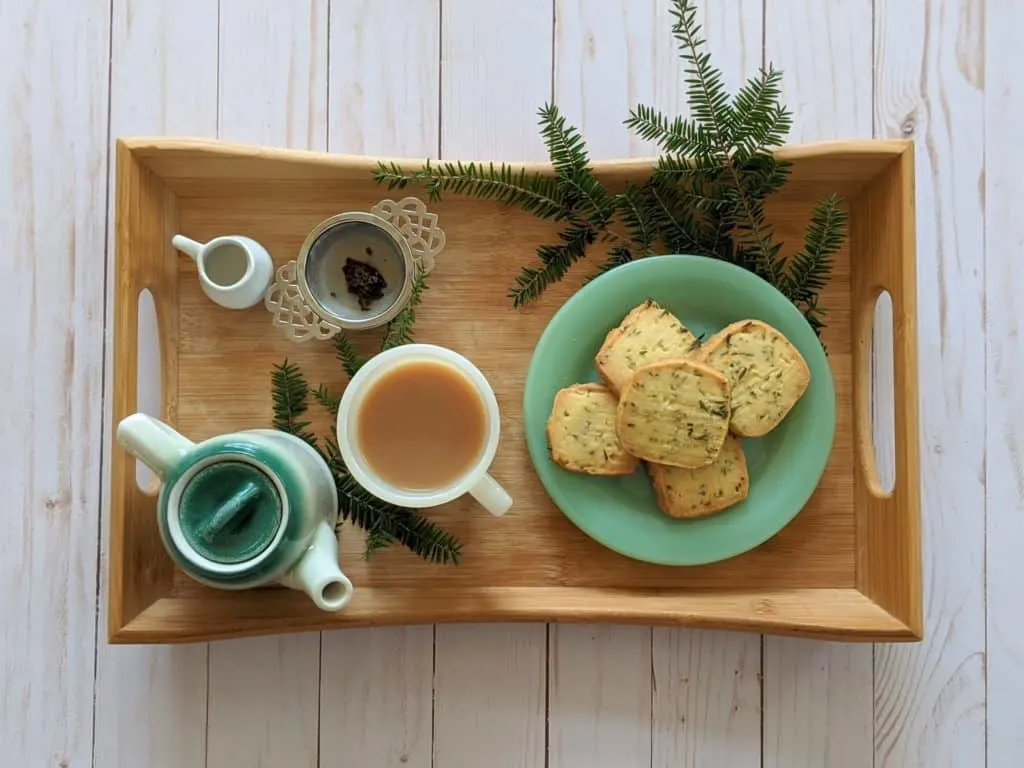
I’ve always used the Scotch Shortbread recipe from my mom’s old Fannie Farmer cookbook, which you can find here. Only this time, I put in two tablespoons of lightly chopped Eastern Hemlock needles. I added them in after the sugar but before the flour.
The recipe says to bake for 20-25 minutes, but I always start checking mine around 15 minutes.
Not only did my house smell amazing while the cookies were baking, but they made for the perfect companion to my afternoon tea.
4. Pine-Needle Spirits
How about a spruce infused vodka or gin for a refreshing winter cocktail?
The ineffable David Leite gives us the low down on making an evergreen infused spirit. Don’t keep it all to yourself; homemade spruce vodka makes for an impressive gift.
5. Eat ‘em raw.
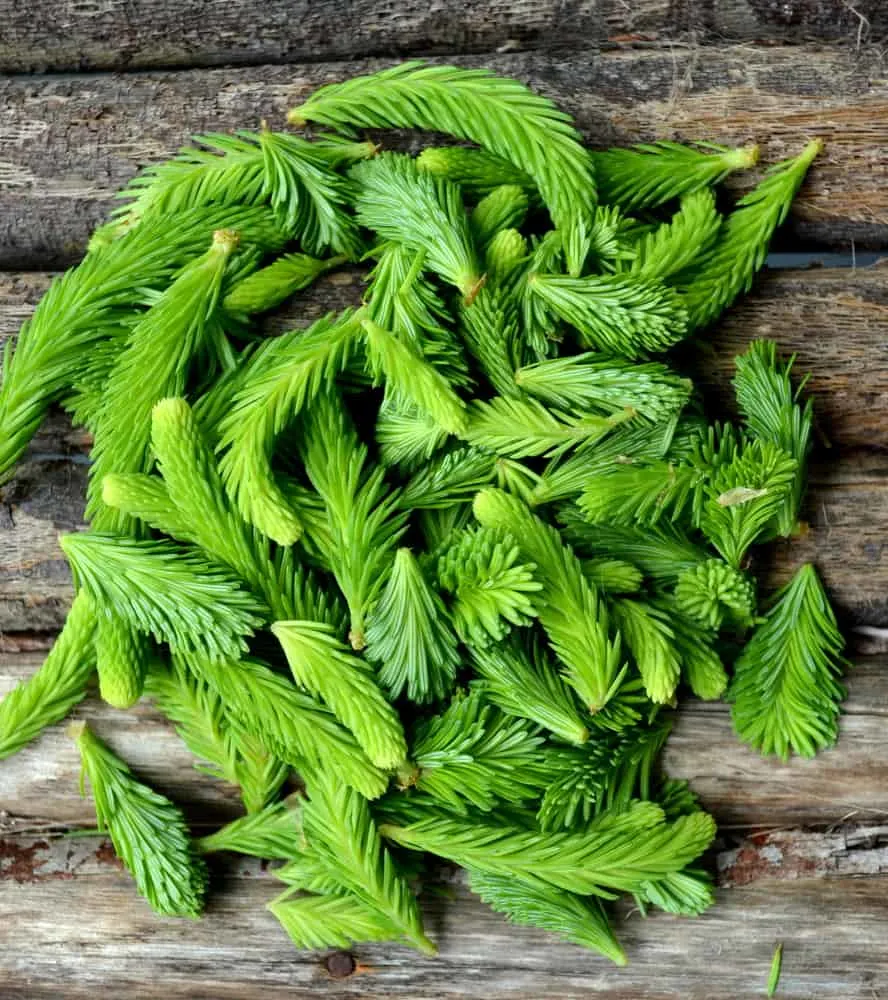
Spruce tips, especially in the spring, are a favorite hiking treat. The new growth is bright green, so fresh and vibrant. They are a delicious snack when you are out on the trail.
Plus, you can turn them into your own spruce tips syrup with our recipe here.
6. Pine needle tea
Pine is jam-packed with vitamins A & C, even more vitamin C than orange juice. Naturally, this makes it a great immunity booster during the cold winter months when germs abound.
Pine needle tea is simple to make as well as a soothing sipper.
Use as little as a tablespoon up to a ¼ cup of pine needles depending on how potently-piney you want it. White pine trees make a delightful citrus-flavored tea.
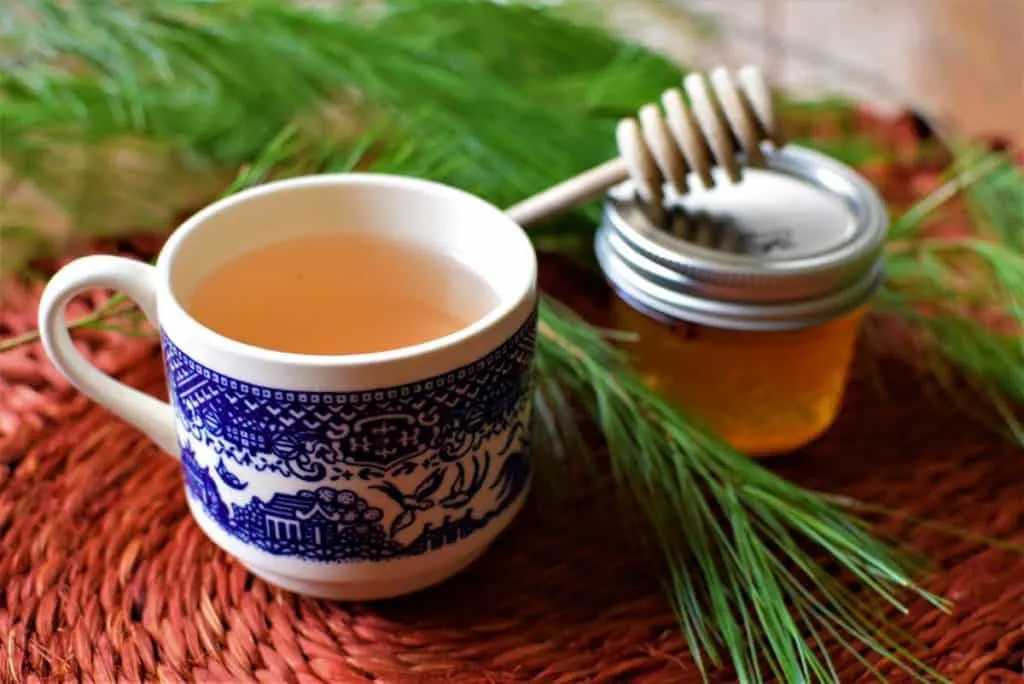
Add the pine needles to a pre-warmed teapot. Pour in a cup of boiling water and steep for five minutes. Or bring water and pine needles to a rolling boil in a small saucepan. Turn off the heat, cover, and steep for five minutes.
Strain and enjoy. The flavor on its own is mild and pleasant. However, it’s quite lovely with a dash of fresh lemon juice or honey.
Remember this delightful tea the next time you go camping, too.
7. Pine Needle Infused Cooking Oil
Another great infusion to cook with is pine needle oil. It’s just as simple to make as the infused vinegar, and far more versatile. You’ll want to choose a good quality cooking oil, such as extra virgin olive oil, grape-seed oil, or even avocado oil.
Add 1/3 cup of pine needles to a jelly jar (8 oz.) top up with your oil choice. Store in a warm, dark place where time can work its magic for around 2-4 weeks. Strain the oil into a clean jar. Add a splash of your pine needle oil to sautéed mushrooms, drizzle over baked fish, or top a peppery arugula salad.
This should be good for approximately two months. But who are we kidding, you’ll run out long before then.
Pine Needle Uses For Health and Beauty
8. Pine Needle Cough Syrup
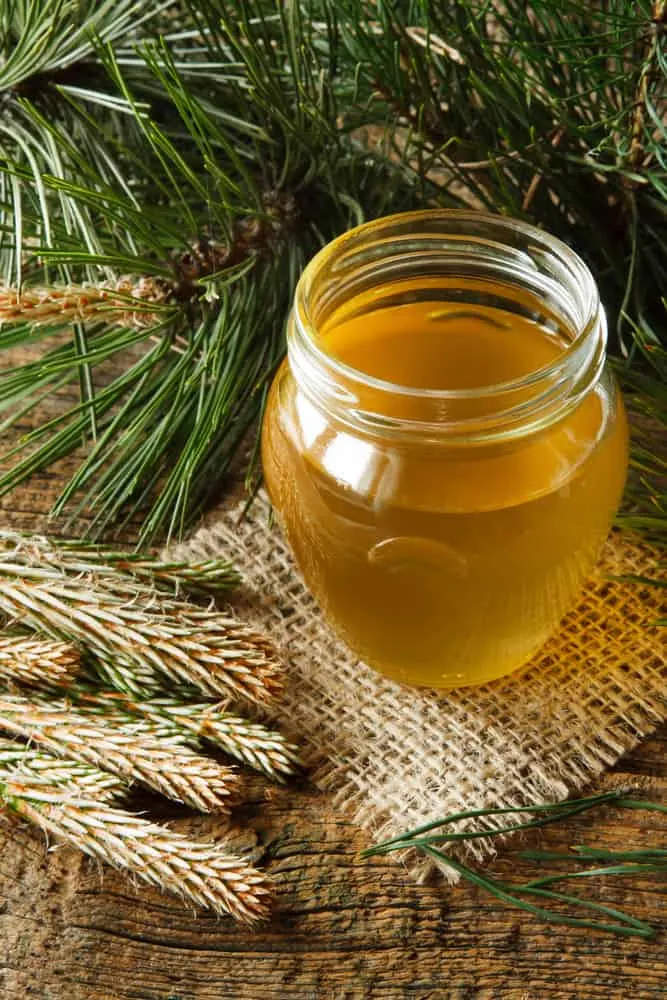
The next time you have a sore throat or cough, give this pine needle cough syrup a try.
You may be surprised at how well it works. I know I certainly was. The taste is even kid-approved.
It requires only three ingredients to make, and you probably already have them close at hand – water, honey, and pine needles.
9. Refreshing Foot Soak
Homesteading is hard work, and often it feels like the brunt of that hard work is done by our feet. After a long day, soothe your barking dogs in a warm foot soak.
Any old flat-bottomed container that will hold liquid and is big enough for your feet will do. Plastic storage bins work well. Add enough comfortably hot water to come up to your ankles. Stir in one cup of fresh pine needles. If you want to get fancy, add a 1/3 cup of Epsom salts too. Ah, that’s better!
A minor note
Pine is credited with having antibacterial, antifungal, and antimicrobial properties. However, I can’t say for sure if these claims are valid, but you may find relief from Athlete’s foot or foot odor by soaking your feet in a pine needle bath.
It can’t hurt to give it a try. At best it works, at worst you enjoy a relaxing foot soak.
10. Pine Needle Chest Rub
If you don’t relish the idea of slathering dead dinosaurs and camphor on your chest when you’ve got a cold, ahem, Vicks, then give this soothing evergreen salve a try.
Pine has long been known to open up your sinuses and ease congestion. Rub this salve on your back and chest when you’re coughing and congested, and you’ll rest easy.
11. Beard Balm
Look, I’m just going to come right out and say it. I love a well-groomed beard. Especially one that smells of fresh pine.
Tame that rascally chin-warmer with some homemade Rosemary and Pine Beard Balm. Your skin and glorious beard will thank me.
12. Congestion-Relieving Pine Needle Steam
Sleep better with congestion-relieving pine needle steam. In the colder months, due to the furnace running, the air gets so dry. As a result, this leads to congestion, scratchy throats, and dry skin.
About two winters ago, I got sick of searching for the perfect humidifier and ended up just going with the simplest solution – I bought a small crockpot.
Every evening I fill it with water, turn it on high, and close my bedroom door. Lately, I’ve been adding sprigs of pine needles to the water. When I turn in for the night, the scent of a fresh pine forest awaits me. I’ve been sleeping like a baby!
Here are a few more great indoor uses for pine needles.
13. The Original Pine-Sol
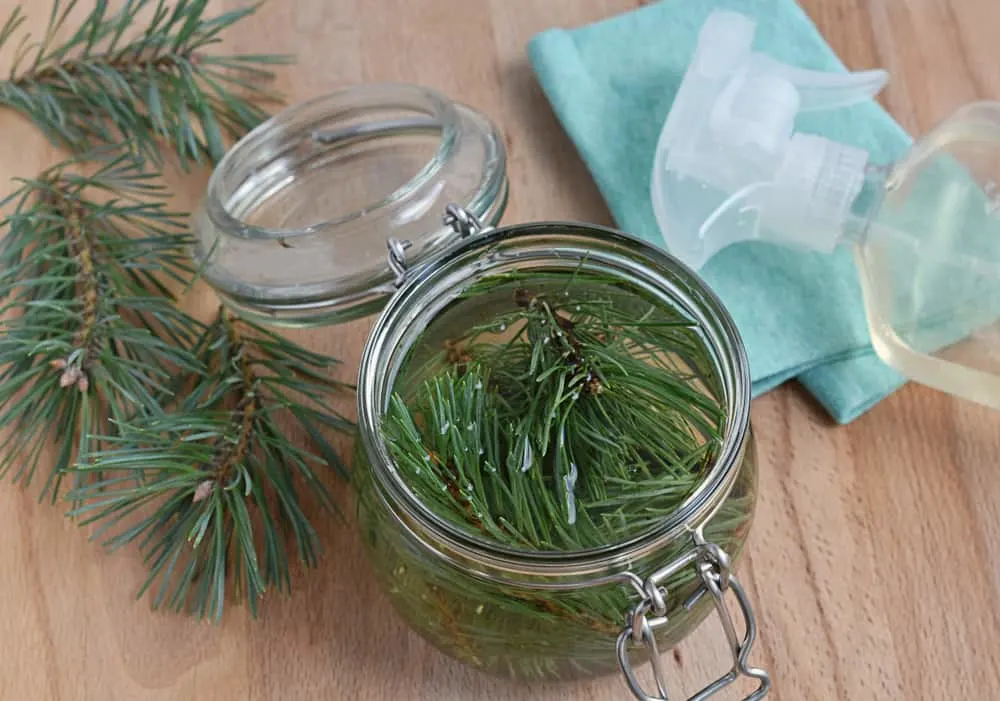
Make a pine-based household cleaner. Remember our pine needle infused vinegar further up in this article? Well, switch to plain white vinegar and follow the same recipe.
Bam!
In 2-4 weeks, you have a pine-scented cleaner that can tackle the toughest stovetop grease and the slimiest soap build up in your shower.
I ditched chemical cleaners for vinegar ages ago. It works on just about everything. In other words, make it pine-scented vinegar and hoo-boy, dirty countertops beware!
14. Air Freshener
Boil fresh pine needles (and a few pine twigs) in a small saucepan filled with water to neutralize funky food smells in your kitchen.
Because let’s face it, takeout is great, until you smell it the next morning.
15. Firestarters!
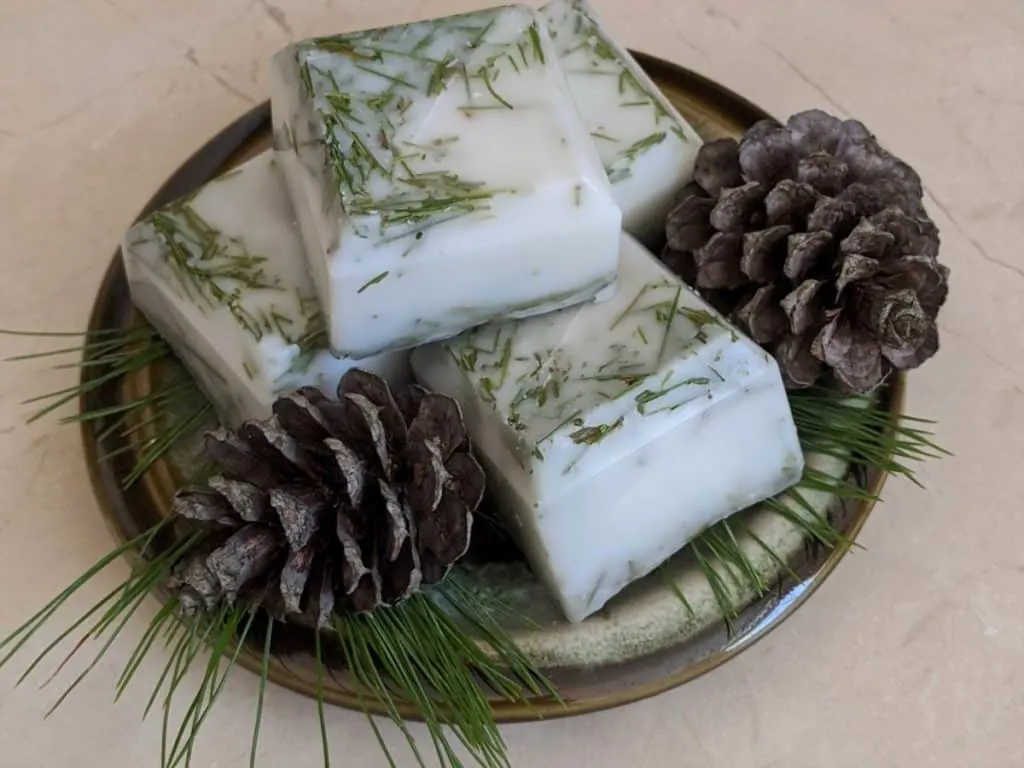
I had so much fun making these. I’ve seen tutorials that recommend using muffin tins for these. However, I used my silicone ice cube trays, and the wax cubes popped right out.
These pine needle fire starters were just the ticket for lighting the woodstove out in the shop this weekend.
To make, put 1-2 tablespoons of pine needles in each cup of a muffin tin or ice cube tray. Using a double boiler, melt paraffin wax until it’s liquid. Pour the melted wax into each cup. Freeze for an hour then pop out your fire starters. Use one or two when lighting your fire.
If you’d like to try some eco-friendly firelighters that don’t use paraffin wax, then take a look at our top picks here.
16. Pine Needle Sachets
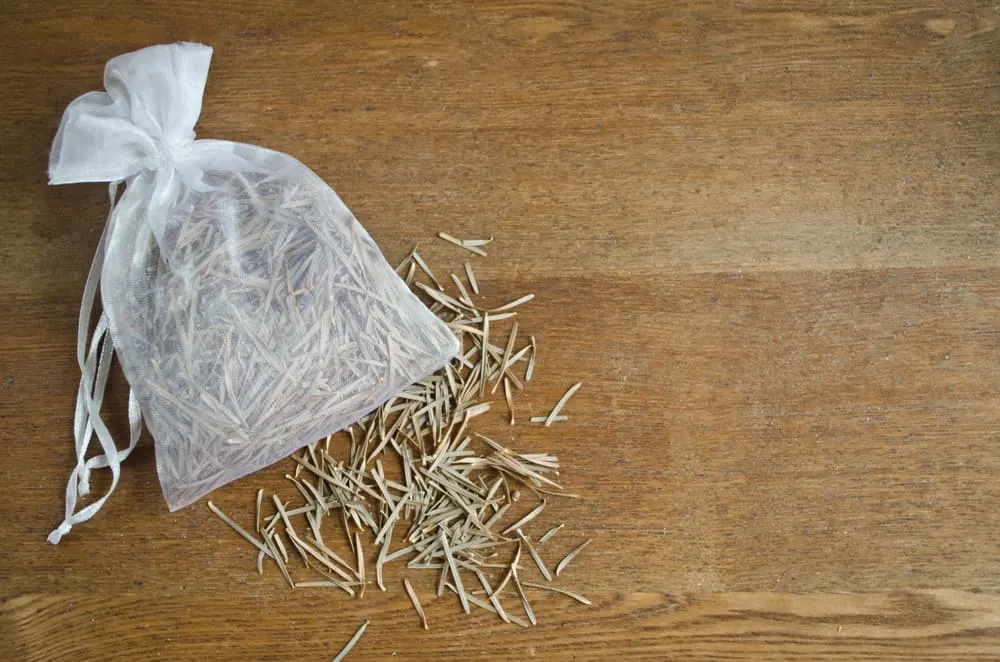
Keep your clothes smelling fresh with pine needle sachets. If you’re handy with a sewing machine, you can sew cloth baggies. Stuff them with fresh pine needles and sew or tie them closed. Toss a couple in each drawer and in your closet to keep clothes smelling Fresh.
If you aren’t up to sewing, these lovely little drawstring gift bags make great sachets.
Get crafty with pine needles.
If you have pine trees near you, then you have an abundant supply of craft materials.
17. Coiled Pine Needle Baskets
Several Native American tribes used pine needles to make baskets. They would make coils with bunches of needles and sew the baskets together. These baskets were sturdy and beautiful. Some were tightly woven; then the insides smeared with pine pitch so they could hold water.
This traditional craft lives on today. There are many great online resources if you would like to learn how to make coiled pine needle baskets. Here is a fantastic video tutorial to help get you started.
Pick up Pine Needle Basketry: From Forest Floor to Finished Project for a more in-depth look at this historic craft.
18. Pine Needle Castile Soap
There’s nothing more refreshing than pine-scented soap to wake you up in your morning shower.
Put two cups of pine needles in a quart jar and fill to the top with olive oil. Let the oil infuse in a warm, dark place for a month.
After that, strain your pine-scented oil and use it with this great castile soap recipe. It’s a recipe that’s easy enough for a beginner soap-maker.
Related Reading: 25 Reasons You Need A Bottle Of Castile Soap
19. Pine Needle Tassels
Just a warning, making these things is addicting.
I have Eastern White pine trees all around me, so now my house has Eastern White pine tree tassels everywhere. These take moments to make, and you can dress them up or keep them rustic.
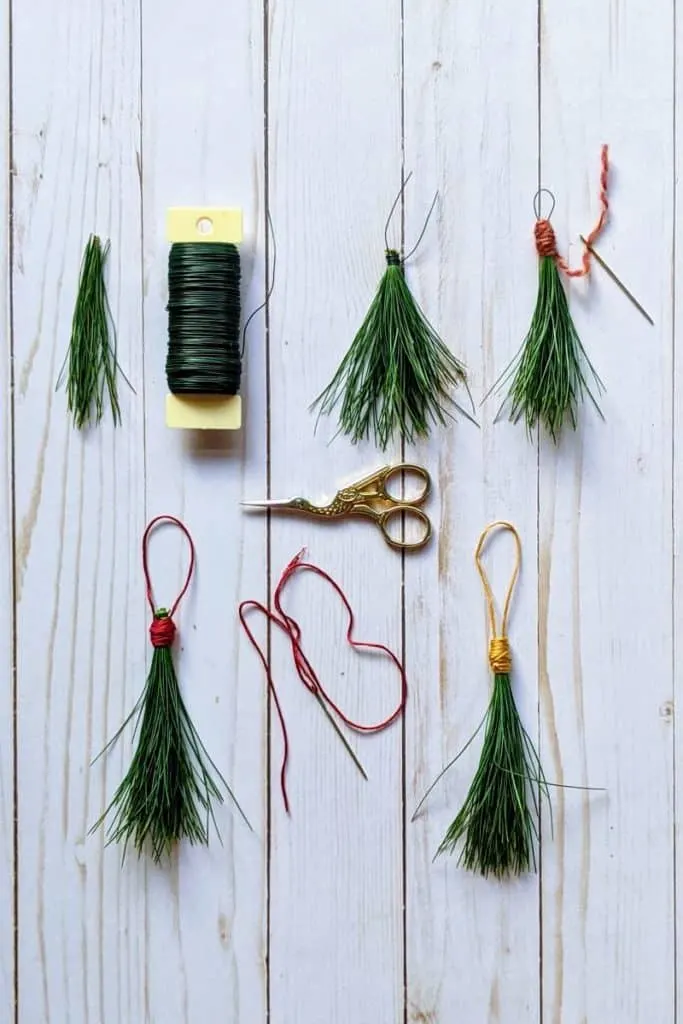
Tightly wrap a bundle of pine needles at their base with green florist wire. Then wrap the top of your tassel with raffia, baker’s twine, embroidery floss, yarn, or jute twine. You can make a loop with the florist wire, or with whatever material you wrap over the top of the wire.
Hang them everywhere, put them on gifts, or get crazy and wear them as earrings. No earrings? Just me?
Hey, leave your pine needles outdoors!
Pine needles are a handy item to use in and around the garden too. So, grab your rake and wheelbarrow and gather ‘em up.
20. Pine Needle Mulch
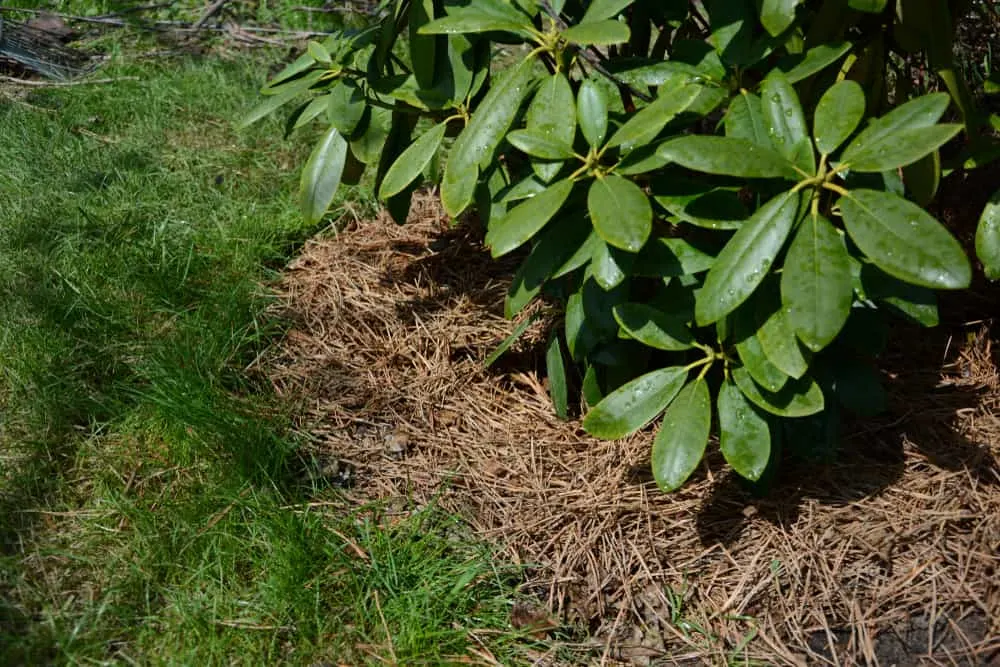
Probably the best outdoor use, pine needles make for a great mulch. Light, slow to decompose, and free. What’s not to love?
Instead of lugging around a heavy wheelbarrow of wood chips, put down a three to four-inch layer of pine mulch around plants. Be sure to leave a space of about three inches around the base of each plant.
As a result of their shape, the needles interlock and don’t compact as quickly as wood chips do. This means your soil still gets good air circulation.
21. Pine Needle Pathways
Use pine needles to line the rows in your garden. After you have your garden planted, put down a layer of pine needles in each row to help keep weeds down, and to prevent erosion.
Pine needles can also be used to line paths around your home, giving your landscape a rustic look and feel to it.
22. Bedding for Chickens
Mix fresh pine needles in with your chicken’s bedding to help keep your coop smelling fresh. The pine scent may even help to ward off bugs from your flock.
As we wrap up, hopefully, you can see why I love all things pine? Whether fresh or fallen, pine needles are a versatile and abundant material to be used in and around the homestead.
And while you’re out collecting pine needles, why not pick up some pine cones too? Here are some practical ways to use them, and here are some festive ways to decorate with them.

Get the famous Rural Sprout newsletter delivered to your inbox.
Including Sunday ramblings from our editor, Tracey, as well as “What’s Up Wednesday” our roundup of what’s in season and new article updates and alerts.


